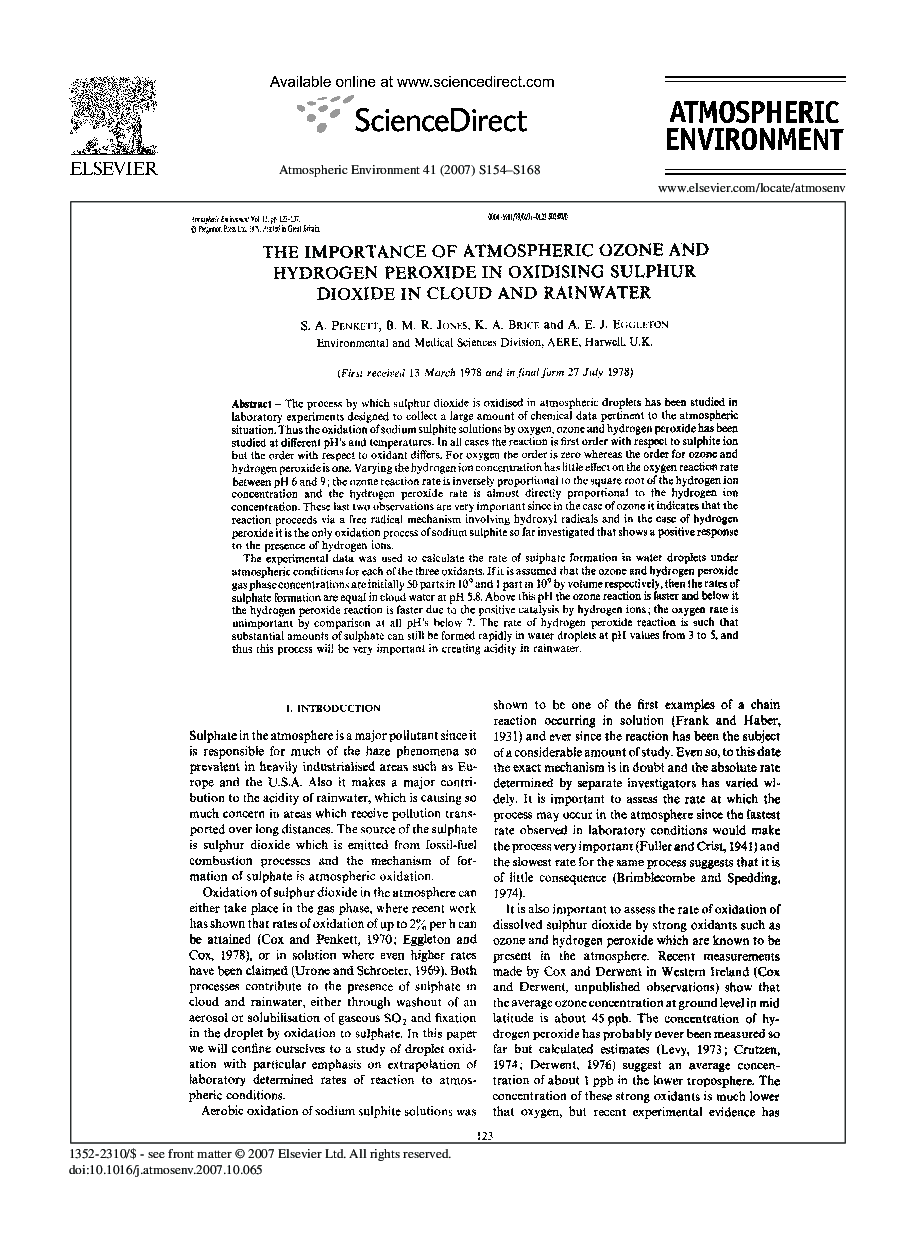| Article ID | Journal | Published Year | Pages | File Type |
|---|---|---|---|---|
| 4444078 | Atmospheric Environment | 2007 | 15 Pages |
The process by which sulphur dioxide is oxidised in atmospheric droplets has been studied in laboratory experiments designed to collect a large amount of chemical data pertinent to the atmospheric situation. Thus the oxidation of sodium sulphite solutions by oxygen, ozone and hydrogen peroxide has been studied at different pH's and temperatures. In all cases the reaction is first order with respect to sulphite ion but the order with respect to oxidant differs. For oxygen the order is zero whereas the order for ozone and hydrogen peroxide is one. Varying the hydrogen ion concentration has little effect on the oxygen reaction rate between pH 6 and 9; the ozone reaction rate is inversely proportional to the square root of the hydrogen ion concentration and the hydrogen peroxide rate is almost directly proportional to the hydrogen ion concentration. These last two observations are very important since in the case of ozone it indicates that the reaction proceeds via a free radical mechanism involving hydroxyl radicals and in the case of hydrogen peroxide it is the only oxidation process of sodium sulphite so far investigated that shows a positive response to the presence of hydrogen ions.The experimental data was used to calculate the rate of sulphate formation in water droplets under atmospheric conditions for each of the three oxidants. If it is assumed that the ozone and hydrogen peroxide gas phase concentrations are initially 50 parts in 109 and 1 part in 109 by volume respectively, then the rates of sulphate formation are equal in cloud water at pH 5.8. Above this pH the ozone reaction is faster and below it the hydrogen peroxide reaction is faster due to the positive catalysis by hydrogen ions; the oxygen rate is unimportant by comparison at all pH's below 7. The rate of hydrogen peroxide reaction is such that substantial amounts of sulphate can still be formed rapidly in water droplets at pH values from 3 to 5, and thus this process will be very important in creating acidity in rainwater.
